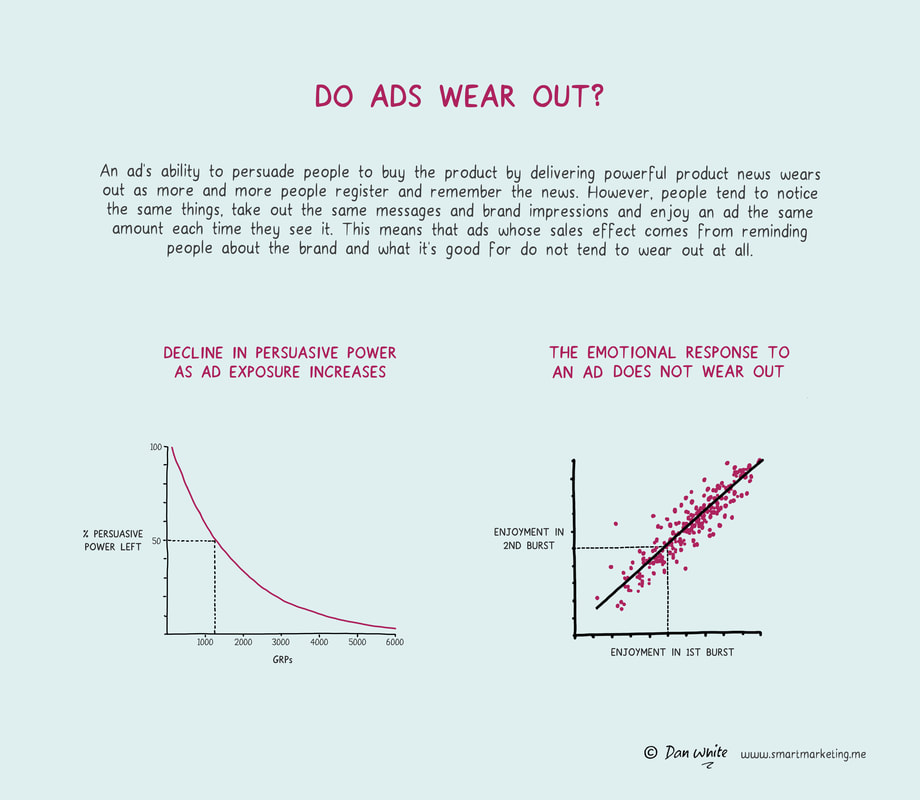|
To be honest, I don’t feel I have a definitive answer to this question. If pushed to express my current point of view it would be: 'ads do wear out, to an extent, but not as much or as fast as marketers think and strong ads with plenty more mileage are too often replaced by something less effective.’ As ever, I will revise this POV as I learn more.
Here is a summary of the most relevant evidence I have come across:
Check out this LinkedIn thread for a discussion about the topic. What to learn more? Try asking Virtual Dan White. |
- Home
- Books
-
Illustrations
- Marketing
- Brand Development
- Brand Experience
- Innovation
- Communications Strategy
- Media Characteristics
- Creative Content
- Pricing & Sales Promotion
- Measurement
- Data and Analysis
- Brand Review & Planning
- Brand Extension
- Mental Processes
- Business
- Business Story Telling
- Case Examples
- Wellbeing
- People Skills
- Life Hacks
- Articles
- Media
- Services
- Merchandise
- Contact

